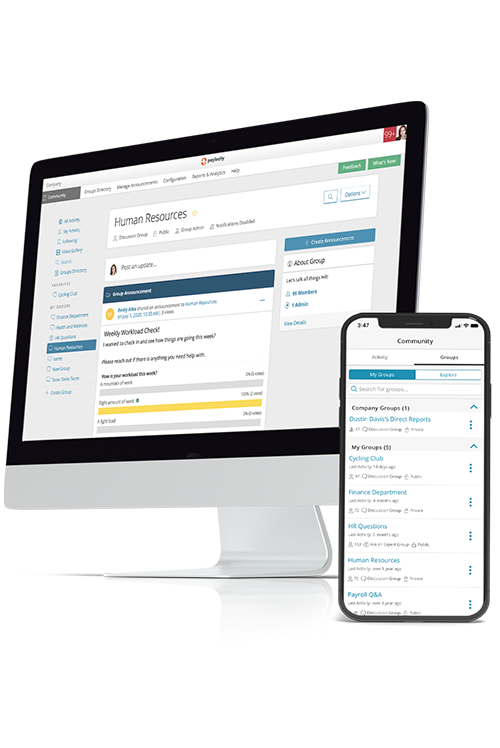What is Employee Disengagement?
Employee disengagement is when employees feel disconnected from their work, the company’s goals, and its culture.
Employee engagement exists on a spectrum, but you can generally classify disengaged employees into two broader groups:
- Lack of Engagement: These employees “lack motivation and are less likely to invest discretionary effort in organizational goals or outcomes.” They put time (but not energy) into the work they do for the company.
- Actively Disengaged: These employees “are unhappy and unproductive at work and liable to spread negativity to coworkers.” An actively disengaged employee poses a toxic threat to other team members. They could become the type of employee who actively works to undermine or damage the company.
To truly understand disengagement, it helps to look at it in the context of engaged employees.
Engaged vs Disengaged Employees: What’s the Difference?
To illustrate, let’s compare the behaviors and attitudes of engaged versus disengaged employees.
|
Engaged Employees |
Disengaged Employees |
|
Motivated |
Apathetic |
|
Committed |
Reduced productivity |
|
Active participant |
Avoids collaboration |
|
Seeks constructive feedback |
Defensive or indifferent to feedback |
|
Takes pride in their work |
Work is rushed or incomplete |
6 Stages of Employee Disengagement
Disengagement can vary from person to person, but there are common stages that employees may go through when not engaged at work:
- Lack of Interest: Employees may initially show a decrease in interest or enthusiasm for their work. They may become less invested in tasks and projects, leading to a decline in their overall motivation.
- Reduced Productivity: This lack of interest and motivation often leads to a decline in productivity. Tasks that used to be completed efficiently may take longer, and the quality of work may suffer due to diminished effort and attention.
- Increased Distraction: As disengagement deepens, employees may become more easily distracted. They may spend more time on non-work-related activities, such as social media, personal conversations, or other diversions from their responsibilities.
- Negative Attitude: Disengaged employees may develop a more negative attitude toward their work, colleagues, and the organization. They might openly express dissatisfaction, resist collaboration, and exhibit a general sense of pessimism.
- Withdrawal: At this stage, disengaged employees may start withdrawing from social interactions. They may avoid team events, meetings, or other collaborative activities, isolating themselves from their colleagues.
- Job Searching/Resignation: The final stage often involves disengaged employees actively seeking new job opportunities or deciding to resign from their current position. This stage reflects a complete disconnection from the current role and a desire for a fresh start elsewhere.
Top Signs of Disengaged Employees
Recognizing and addressing the early stages of disengagement can help prevent the progression to more severe concerns.
|
Characteristic |
Description |
Example(s) |
|
Lack of Enthusiasm |
A noticeable absence of excitement or passion for their work. |
Tasks that once sparked interest are approached with indifference. Employee may struggle to find motivation or joy in their daily responsibilities. |
|
Decreased Productivity |
A decline in the employee’s output and efficiency. This is a key indicator of waning engagement. |
Tasks take longer to complete, and the quality of the work suffers due to reduced effort and/or commitment. |
|
Increased Apathy |
A growing sense of indifference or lack of concern toward the job and the organization. |
The employee displays a general disinterest in the success of projects or the company's goals. This apathy can lead to a detachment from the work, negatively impacting individual and team performance. |
|
Lack of Ambition |
A loss of interest in development opportunities and viewing them as unimportant or disconnected from career progression. This can signify broader disengagement from the workplace and reduced commitment to investing in skillsets. |
Employee doesn’t care about participating in professional growth or skill enhancement activities. They have little enthusiasm for training programs, workshops, or opportunities for career advancement. |
|
Poor Communication |
A breakdown or deterioration in the quality and effectiveness of the worker's interactions with colleagues, supervisors, or team members. |
Employee is reluctant to share information, express ideas, or collaborate. Communication may become inconsistent, unclear, or disinterested, leading to misunderstandings and a lack of alignment with team goals. |
|
Emotional Distancing |
An emotional detachment that lacks enthusiasm, passion, or concern for work and/or colleagues. Another key indicator of disengagement, as it reflects a decreased sense of belonging and involvement. |
Employee shows general disinterest and is emotionally disconnected from the workplace, leading to a decline in overall motivation and commitment. |
Physical and Mental Health Impacts of Disengagement
Decreased job satisfaction and commitment can have both physical and mental indicators.
Physical impacts may include signs of fatigue or employee burnout, including changes in sleep patterns, increased susceptibility to illness, or tension-related issues (e.g., headaches or muscle aches).
Mental symptoms manifest in the behaviors mentioned above.
Disengaged employees often experience heightened levels of stress, anxiety, or feelings of apathy. Their cognitive engagement with tasks may decrease, leading to decreased creativity, problem-solving abilities, and overall performance. This can extend to emotional well-being, also, with potential signs of frustration, disinterest, or detachment from the work and the workplace.
What Causes Employee Disengagement?
So, what exactly causes employee disengagement? More often than not, there are several factors at play, some of the most common ones being:
- Lack of Recognition: Employees may disengage when their efforts go unnoticed or unappreciated, leading to feelings of undervaluation.
- Poor Leadership: Ineffective or unsupportive leadership can make employees feel there’s a lack of guidance, direction, or trust.
- Limited Career Growth: A lack of opportunities for professional development and career advancement can lead to employee disengagement, particularly among those seeking growth.
- Inadequate Communication: Poor communication, including a lack of transparency, unclear expectations, or insufficient feedback, can contribute to feelings of isolation and disengagement.
- Workload and Stress: Excessive workload, unrealistic expectations, and high stress levels can lead to employee burnout and disengagement.
- Mismatched Job Roles: Employees may become disengaged when their skills are underutilized, or the job doesn't align with their interests.
- Poor Work-Life Balance: A lack of balance between work and personal life can cause employees to struggle with managing their responsibilities outside work.
- Organizational Change: Uncertainty or dissatisfaction related to organizational changes, such as restructuring or leadership transitions.
- Cultural Issues: A toxic or unsupportive workplace culture, characterized by poor relationships, lack of collaboration, or discrimination.
Organizational Signs of Employee Disengagement
Every organization is bound to have a few disengaged employees. But how do you tell if the problem is endemic? Here’s a few data points to investigate.
1. Low Company Growth Rate
The growth rate of your organization is an indicator of how engaged your workforce is (or isn’t). If your year-over-year growth is behind where you expected or projected it'd be, it could mean your employees aren’t as highly engaged as they could be.
2. High Employee Turnover
Rarely do employees leave an organization where they feel happy and satisfied. Typically, employees cite a few common reasons behind a voluntary departure, including:
- A poor relationship with their manager
- Lacking belief in the company mission
- Being overworked (or not challenged enough)
- Feeling undervalued or underutilized
- Lack of opportunity
- Low pay
- Poor company culture
When your organization is experiencing chronic, widespread, high employee turnover, it’s time to investigate further.
3. Fewer Interactions with Employee-Facing Programs
If you notice that employees aren’t communicating regularly or taking advantage of learning and development opportunities, it could be a sign workforce engagement is on the decline.
Similarly, if employees aren’t using available communication tools to collaborate with their peers, touch base with their managers, or interact with other employees, it’s time to do some digging into the root cause.
4. Employees’ Feelings About the Organization Are Clearly Charging
From apathy or decreased collaboration to constant pessimism or outspoken cynicism, employee sentiment is one of the most important touchstones in determining your workforce’s engagement.
So, how can managers magnify these areas for a more thorough understanding?
The easiest solution is to go straight to the source and just ask. Employee engagement survey questions take the guesswork out of determining your workforce’s mindset, and provide direct feedback. If you go this route, be sure to follow up with responses.
How to Motivate Disengaged Employees: What Do Your Staff Really Want?
Keeping your greatest resources motivated is the secret to success for any organization. Businesses with higher employee engagement rates are both 21% more profitable and 17% more productive.
So, how do you motivate disengaged employees? Discover what’s important to them and how to improve it across your workforce.
1. Workplace Connections
One central theme among unengaged employees is a lack of connection to their colleagues or organizations. Unsurprisingly, connection is essential for a positive employee experience. It enables increased communication, effective collaboration, and overall productivity while also creating a culture of meaningful relationships and meaningful work.
![]()




